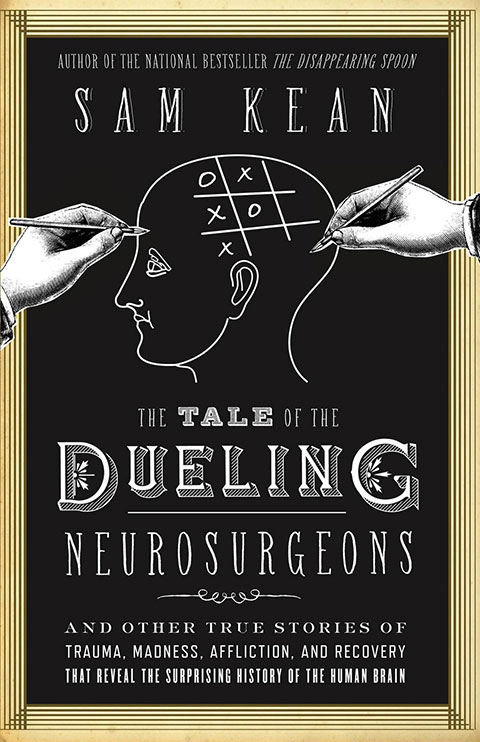 |
The Tale of the Dueling Neurosurgeons The History of the Human Brain as Revealed by True Stories of Trauma, Madness and Recovery
Sam Kean
Little, Brown and Company, first edition, 2014
ISBN: 978-0-316-18234-8 |
The premise of this book is to provide an overall look at the human brain and how it works to generate the human experience. To achieve this, the author divides the brain into smaller, manageable "units", and with the use of famous case studies in neurology, explains what they do and why they matter. The journey starts with cells and circuits, then continues with basic functions such as movement and sensation, and ends with more abstract concepts, like delusions/beliefs and consciousness. The ultimate objective is to have the reader put all these "units" together in the end and get a general overview of the human brain. As the overarching goal, the book delivers as promised, and Sam being a gifted writer (really, a master of the written word), makes the journey a pleasure. To boot, there are rebus puzzles at the start of each chapter, which are just the right combination of challenging and fun.
All of that said, I would not be completely honest if I did not also confess one major reservation. To wit, the case studies are treated very superficially. For instance, in the first section the reader does not really learn anything meaningful about cells and circuits, as the author focuses primarily on the historical relevance and social implications of the cases, but glosses over the actual biology. Indeed, the book leaves the slight impression that it is not well researched, which is confirmed when glancing at the bibliography. There are no more than twenty or so references per chapter, which is not nearly enough to cover these cases fairly or to understand their nuances. On top of that, although the author acknowledges "many brainy scientists" who contributed to the chapters, they are not named individually so it is hard to know whether he was aided by the appropriate experts.
Unfortunately the author comes across as amateurish when discussing the brain and in the end I cannot help feeling that all the flowery verbiage simply creates a beautiful literary facade, but with little substance underneath. Nevertheless, I ultimately recommend the book, but primarily given its elegant, witty and lighthearted prose. If you have absolutely no knowledge about the brain, you will most likely find this book satisfying, but otherwise, you will probably find it lacking.
